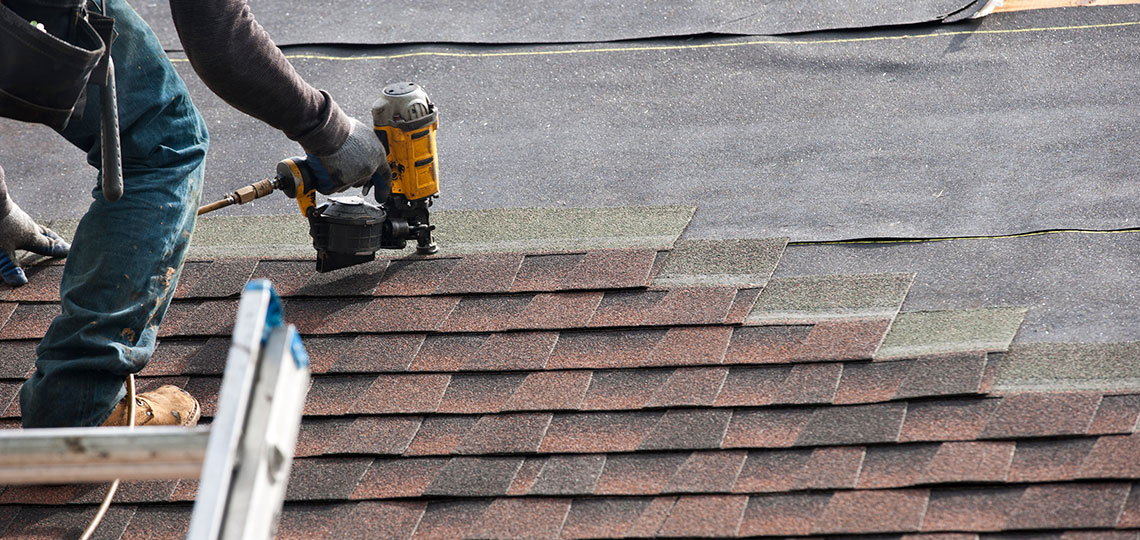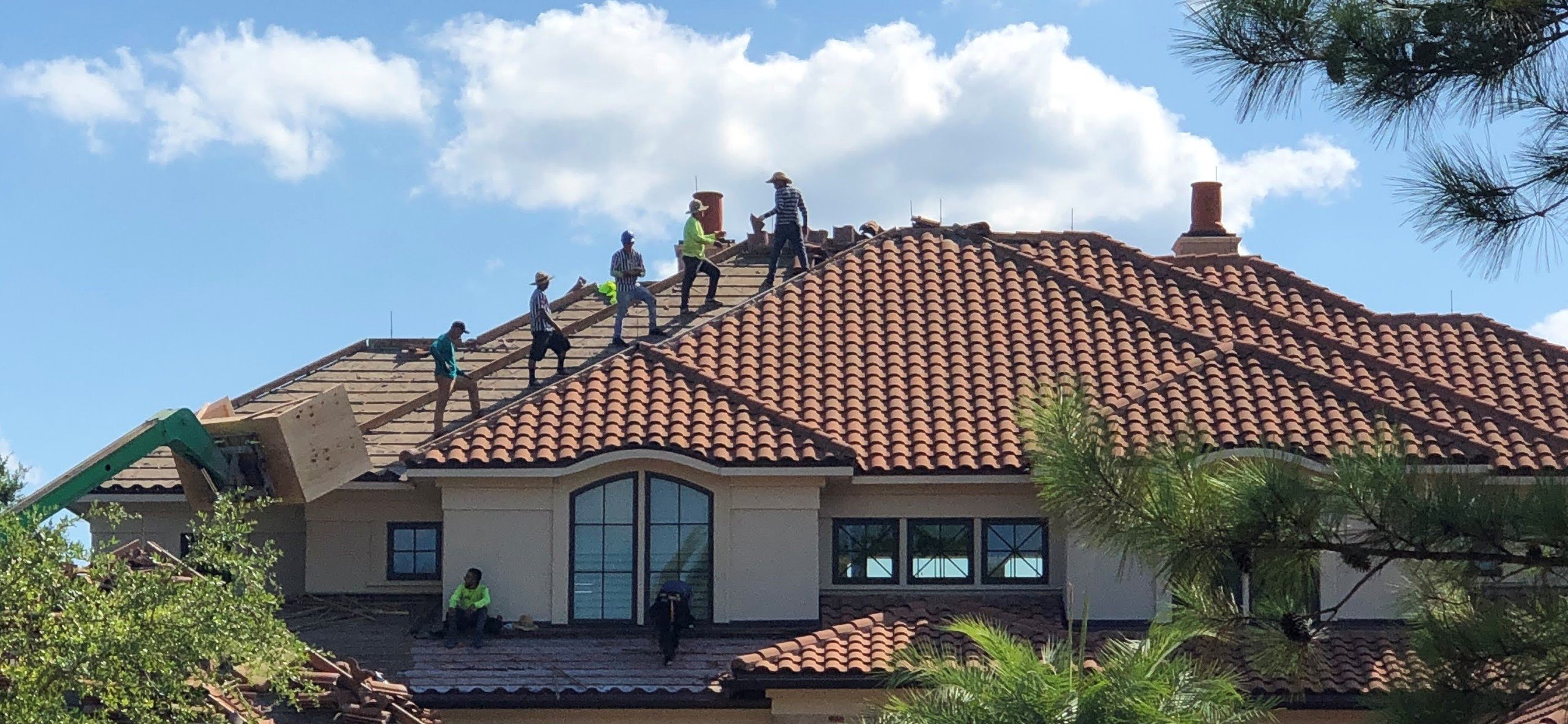Comparing Costs Among Roofing Companies in Gainesville Florida
Comparing Costs Among Roofing Companies in Gainesville Florida
Blog Article
Finest Practices for Ensuring Appropriate Roofing Ventilation
Ensuring appropriate roofing ventilation is essential for the long life and performance of a roof. A balanced consumption and exhaust air vent proportion, frequently 1:300, plays a critical function, with consumption vents ideally placed at the lower edge of the roof covering for trendy air access and exhaust vents at the optimal for warm air departure. Regular examinations to recognize blockages and preserve clear air movement are paramount. In addition, maintaining insulation far from vents is important to stop air movement limitation. Comprehending these fundamental components sets the phase for even more thorough insights into installment and maintenance methods that can considerably boost your roofing system's efficiency.
Understand Ventilation Basics
Correctly recognizing air flow fundamentals is crucial for guaranteeing the longevity and performance of roof. Reliable ventilation mitigates dampness accumulation and temperature extremes in the attic, both of which can bring about significant architectural damages gradually. A well-ventilated roof covering helps in preventing common problems such as mold growth, wood rot, and ice dams, which can compromise the honesty of the roof covering products and the underlying frameworks.
The main objective of ventilation is to facilitate the movement of air, permitting a consistent exchange between the indoor and outdoor environments. This equilibrium is attained with a mix of consumption and exhaust vents that function together to preserve ideal airflow. Consumption vents, typically situated along the eaves or soffits, allow fresh air to get in the attic room, while exhaust vents, typically situated at or near the roof covering ridge, make it possible for warm, moist air to run away.
Secret variables influencing the performance of roof air flow include proper positioning, appropriate sizing, and making sure that both intake and exhaust vents are unobstructed. Normal assessment and maintenance are critical to identify possible clogs, damage, or inefficiencies in the ventilation system, consequently protecting the roof covering's efficiency and sturdiness.
Kinds of Roof Covering Vents
Roofing vents play an essential function in keeping effective attic ventilation and, by extension, the overall health and wellness of the roof covering system. Various types of roofing system vents are offered, each with unique benefits tailored to certain roof covering requirements.

Soffit vents are set up under the eaves and operate in tandem with roofing vents to make certain a balanced intake and exhaust system. By allowing cooler air to get in from below, soffit vents facilitate the expulsion of warm air with top vents. Gable vents, situated on the exterior walls of the attic room, deal an additional effective remedy, particularly in homes with gable roofing systems.
Analyze Your Current Ventilation

Following, take into consideration the age and condition of your roofing products and air flow elements. Older systems may not follow present building click now regulations or might have weakened gradually, reducing their performance. Conduct a thorough evaluation to recognize any type of indicators of deterioration, such as corrosion, damage, or voids that might jeopardize the system's performance.
Furthermore, measure the attic room temperature and moisture levels. High temperatures and moisture can indicate poor ventilation - roofing companies gainesville florida. Use a hygrometer and thermostat to obtain exact readings, contrasting them with outside conditions. Consistent disparities recommend possible issues that require addressing.
Installation Best Practices
Efficient installment of roof covering ventilation systems is paramount for guaranteeing optimum efficiency and long life. Proper installation begins with recognizing the details ventilation requirements of the roofing system and the building it covers. This involves determining the right ratio of intake to tire vents, generally sticking to the 1:300 rule, which stipulates one square foot of ventilation for each 300 square feet of attic floor space.

The positioning of vents is similarly crucial. Consumption vents need to be installed at the roofing's lower edge, typically in the soffits, to permit great air to enter. Exhaust vents, on the other hand, must be installed near or at the roof covering's optimal to help with the leave of warm, damp air. This produces an all-natural air movement that helps keep temperature level and moisture balance within the attic room room.
Seal all air vent links meticulously to avoid air leakages and possible water seepage. Use premium products and adhere to supplier guidelines to guarantee durability and effectiveness. In addition, incorporating ridge vents with baffles can considerably boost air movement efficiency by protecting against wind-driven rain and snow from going into the attic room.
Eventually, specific installation of roof air flow systems reduces potential problems such as mold and mildew growth, ice dams, and architectural damages, guaranteeing the roofing's integrity and the building's total health and wellness.
Normal Maintenance Tips
Consistency in upkeep methods is basic to ensuring the long-lasting efficiency of roof covering air flow systems. During these inspections, ensure that vents are totally free of debris, nests, and other blockages that can hinder air movement.
Make use of a soft brush or a vacuum to get rid of dirt and particles from intake and exhaust vents. Be careful not to harm the air vent displays or louvers throughout the process.
Correct insulation is similarly important. Guarantee that attic insulation does not block the vents, as this can significantly restrict Click Here airflow. Reposition or change it to maintain an efficient barrier. if any type of insulation has moved or cleared up.
Last but not least, replace any type of harmed or missing out on components quickly. Damaged vents, split tiles, or deteriorated blinking can all add to poor air flow and needs to be attended to right away. Routine upkeep ensures that the roofing ventilation system functions optimally, thus extending the lifespan of the roofing system itself.
Final Thought
Making sure appropriate roof ventilation is paramount for maintaining the performance and longevity of a roof. Adherence to the 1:300 consumption and exhaust air vent ratio, coupled with the strategic placement of vents, is important. Regular semiannual examinations, particles cleansing, and making certain insulation does not obstruct airflow are essential techniques. Applying these ideal methods will cultivate a well-ventilated roof system, thereby mitigating possible issues connected to moisture accumulation and extreme heat, inevitably extending the roof's life expectancy.
A click here for info balanced consumption and exhaust air vent ratio, typically 1:300, plays a crucial function, with consumption vents preferably placed at the reduced side of the roof for great air entry and exhaust vents at the peak for cozy air exit. Intake vents, typically situated along the eaves or soffits, allow fresh air to go into the attic room space, while exhaust vents, often located at or near the roofing ridge, make it possible for warm, damp air to run away.
Soffit vents are installed under the eaves and work in tandem with roofing vents to make sure a well balanced consumption and exhaust system. By allowing cooler air to enter from below, soffit vents facilitate the expulsion of warm air via top vents. Adherence to the 1:300 consumption and exhaust air vent ratio, combined with the critical positioning of vents, is necessary.
Report this page